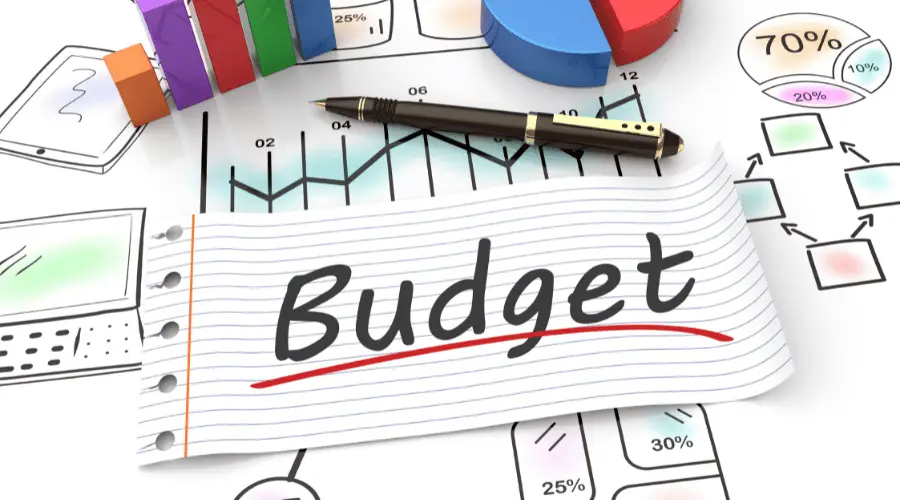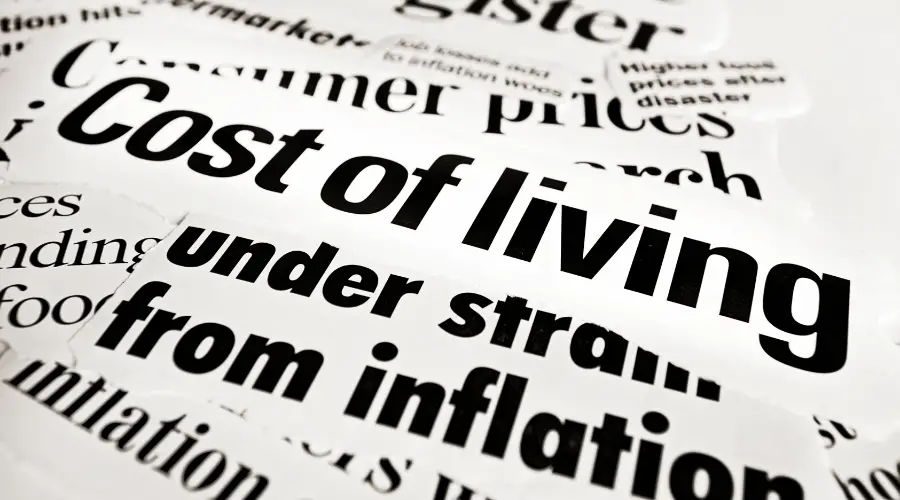Food costs, including takeaways, do take a significant portion of your income, but the irresistible urge for convenience meals can sometimes go overboard, and these costs can spiral out of control. Therefore, knowing how much of your income is viable to sate your takeaway cravings is important to make an informed decision.
You should not spend more than 10 to 15 per cent of your income on food, including takeaways and eat-outs. This is the right time to reconsider your takeaway food decisions as Britain is facing a 14-year high inflation rate on food costs.
Takeaway food will never be free, but you can save money by making smart decisions. Let’s explore how much of your income should go to takeaway food costs and how you can save money through food choices.
How much should I spend on takeaways each month?
Sticking to a budget is essential to control your personal expenses. The goal is to make a target budget in mind for each month and guide the expenses to survive till the end of the month with at least some leftovers. Budgeting is essential to sustain yourself at such a higher cost of living. Budgeting is easy for some expenses as there is a specific amount you pay each year. For instance, your mortgage payment is fixed. However, food is one of those expenses where you can get rebellious and go overboard.
Every month, you spend a different percentage of your income on takeaway food. Once you are addicted to convenience meals, there is no going back. So it is hard to predict your spending and keep up with the set budget. Takeaway food takes a significant portion of your income, but understanding how much is enough can guide you in making great financial decisions.
Financial advisors recommend spending no more than 10 to 15% of your income on food, including dine-in and takeouts. The urge to takeaway food is irresistible, despite being under financial pressure. It is understandable due to reasons such as no involvement in dishes, no need to prepare food, and no hassle. However, you won’t be able to sustain this lifestyle if you continue to ignore financial logic and satisfy your palate by spending more than your range. Therefore, sticking to just 10 to 15% of your take-home income on your food is imperative.

How much does an average Brit spend on takeaway food each month?
Between December 2021 to December 2022, food prices have increased by 16.8%. Britain is experiencing an ever-high increase in food and energy costs. As a result of this economic crunch, almost 7 out of 10 Brits are making at least one change in their house to cut their expenses. You might think Brits would have given up their expensive takeaway habits in response to booming economic gloom.
On the contrary, Britain is still a nation of takeaway addicts. On average, Brits spend around £54 every month, equating to more than £600 a year. Londoners are the most prominent takeaway food enthusiasts. According to the UK’s food delivery trend report 2022, Brits spend more money on weekend takeaways. The most famous takeaway cuisine is Indian, followed by the world’s favourite pizza and burgers.
The frequency of takeaway food varies across the country, however, research by Vodafone revealed that 25% of Brits order takeaway food at least three to four times a month. However, the amount Brit spends on takeaway food depends on several factors, such as where you live, what foods you like, beverage factors, and your individual needs. For instance, if your body weight is high, you would need a great portion size to satisfy your needs, increasing your average spending on takeaway food.
How much fast food does an average Brit eat each year?
Fast food is the third most popular choice among Brits, achieving a popularity score of 58.64. Brits are known for their addiction to fast food, and they claim that “a meal isn’t a meal without meat”. Although Brits are trying to reduce their overall expenditures due to the increased cost of living, cutting down their fast food and takeaway cravings is surely not one of them. This is evident by the frequency of their fast food purchases, and the amount of money Brits spend on fast food.
According to Statista, 25 per cent of Brits purchase a fast food meal at least once a week, equating to around 52 times a year. Moreover, the number of fast food restaurants significantly increased in the UK in the past decade due to the overindulgence of Brits in junk food. In 2022, the UK accounted for more than 46 thousand takeaway and fast food restaurants, which is predicted to exceed 48,000 this year.
Another study revealed surprising outcomes: the UK eats 2.5 billion burgers during one year. This indicates that an average Brit eats 37 burgers a year. Moreover, fast food takeaways, groceries, and meals absorb a third of their whole food budget. This shows that Brits are great fast food lovers, and their cravings for it have even defeated the current financial pressures.
Is takeaway food a good financial decision?
In this rapid, pace world, people face extreme time constraints due to the world, commute, and childcare. That’s why takeaway food seems tempting to them as they won’t have to prepare food at home and deal with all the mess resulting from cooking food.
Moreover, fast food delicacies are irresistible, especially for Brit students. However, this urge to opt for convenient and delicious food options might break the bank. Spending on takeaways is definitely not a good financial decision, especially in such a high cost-of-living crisis. According to Forbes, spending on takeaways or home deliveries costs five times more than cooking the same dish at home. However, meal kit service is affordable but still charges three times more than it takes if you start from scratch at home.
Besides putting a dent in your pocket, takeaway food also significantly negatively impacts your health. To keep the prices lower, takeaway food companies use sub-standard ingredients, which may include fatty meals, and added salt, sugar, and fats. Brits are fast food lovers, so the takeaways mostly contain fast food. This type of processed food leads to many health implications, such as changes in blood pressure and blood sugar levels, high inflammation, indigestion, lack of nutrients, and more. That means takeaway food is not a wise decision to make, both for your health and your finances.

How can I save money with my food choices?
While considering the harms of takeaways on health and pocket, the straightaway solution is to avoid takeaways and cook at home. However, your urge to have fast food delicacies and your busy schedule might not allow you to keep up with the solution. That’s why you need to know the ways that help you order these delectable indulgences without breaking the bank.
For instance, prefer collection rather than ordering home delivery; this will save your delivery charges. If there is no other option than home delivery, try to call directly for your order. Do not use an online food delivery or takeaway service to order your food. About half (52%) of UK residents use third-party services or applications to order food. Although you can browse all the nearby restaurants in one place, their service charges will cost you an arm and a leg. Therefore, order directly from the takeaway rather than using a third-party service.
Try to invest in frozen fruits and vegetables. This way, there will be no food wastage as frozen items have a longer shelf life. Moreover, fruits and vegetables are great for your health. Moreover, do not try to order more than what you want. For instance, a jumbo burger might be too much if you have a minimal appetite. Decide the frequency of your takeaways and the type of food your budget can afford in a month (10 to 15 per cent of income).
Final Thoughts
Food is necessary for survival, but spending too much on food is not the right decision. Takeaway food is convenient; you just need to grab a parcel while returning back from work. However, the current higher cost of living might not allow you to sustain this lifestyle in the long run.
Therefore, the best option is to cook at home, but if your busy schedule is not helping you, go for direct order and try to collect your food from the restaurant instead of seeking a home delivery service. This way, you will save a few pounds and reduce the carbon footprint, saving the environment. By making smart decisions, you will surely be able to eat healthy, delicious, and convenient, despite being on a tight budget.
As always, please remember I am an Accountant, but not your Accountant. In this post (and all of my others) I share information and often give anecdotes about what has worked well for me. However, I do not know your financial situation and do not offer individual financial advice. If you are unsure of a particular financial subject, please hire a qualified financial advisor to guide you.
This article has been written by Luke Girling, ACA – a qualified Accountant and personal finance enthusiast in the UK. Please visit my ‘About‘ page for more information. To verify my ACA credentials – please search for my name at the ICAEW member finder. To get in touch with questions or ideas for future posts, please comment below or contact me here.
